Ana Maria Micu is a Romanian artist who creates drawings, paintings and animations of herself and her surroundings. Her solo exhibition, A Picture on the Wall (牆上的圖像), at Mindset Art Center features black-and-white charcoal self-portraits juxtaposed with colorful oil paintings of her home and studio interiors. Micu is interested in story fragments; she is fascinated “with the fact that she is able to force coherence out of a broken narrative, apparently on a criterion of which she is not fully aware,” writes the gallery. In her paintings, the artist depicts cluttered interiors, drawing attention to potted plants thriving in one corner of a room, unfinished paintings taped to a wall, or bags and clothes hanging on the back of a door. “Marks of the passage of time, the endearing idealism of obsolete design, things that were left behind, abandoned or broken, are the details that the artist notices, allowing herself to be changed by her observations as she paints.”
■ Mind Set Art Center (安卓藝術) 108, Heping E Rd, Taipei City (台北市和平東路108號), tel: (02) 2365-6008. Open Tuesdays to Saturdays from 11am to 6pm
■ Until Jan. 12
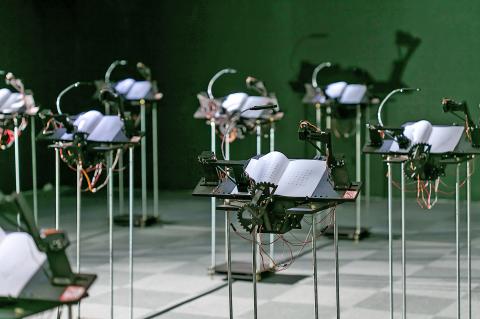
Photo Courtesy of Taipei Fine Art Museum
Double Square Gallery presents Apeiron (未定物), a solo exhibition by Wu Tung-Lung (吳東龍). The title is a Greek word that means unlimited, boundless or infinite — a term that critic Chien Tzu-chieh (簡子傑) uses in an essay to describe Wu’s painting language. Wu is known for creating minimalist paintings that feature subtle layers of colors, organic shapes and spaces. These features, though abstract, suggest nuanced meanings and sensibilities. The artist renders “pure and minimalist symbols in a rationally checked yet emotionally charged manner,” writes the gallery. He insists on a hands-on process that involves repetitive work with paint, tape and plaster to create distinct qualities on canvas. In this show, the artist presents 30 paintings from two ongoing series, Symbol and Color Lines, as well as two new series of small-scale works, Little Blocks and Little Symbol. “Wu’s work [conveys] a powerful visual tension and understated emotions while establishing a distinctive style through its minimal, simplified and rational appeal,” writes the gallery.
■ Double Square Gallery (雙方藝廊), 28, Lane 770, Beian Road, Taipei City (台北市北安路770巷28號), tel: (02) 8501-2138. Open Tuesdays to Sundays from 10:30am to 6:30pm
■ Until Feb. 1
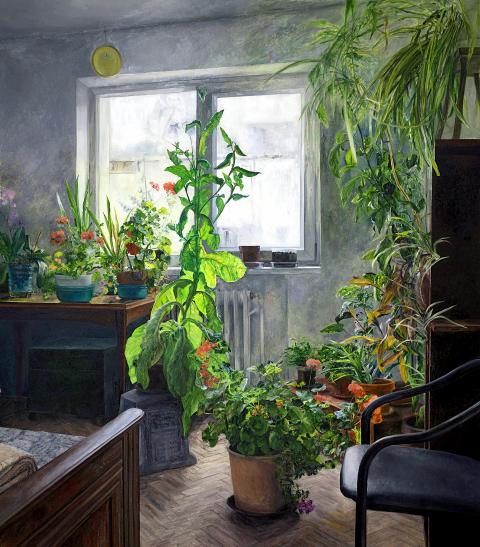
Photo Courtesy of Mindset Art Center
It is the time of year for the annual Taipei Art Awards (臺北美術獎), the city’s prestigious contemporary art competition organized by the Taipei Department of Cultural Affairs. For the last 30 years, the award has attested to the developments in the local arts community, celebrating artists that push the frontiers of art. Each year submissions are made by open call and judged by a panel of art professionals to produce 14 finalists. This year the selected projects incorporate a variety of mediums including video, installation, audio-visual art, kinetic art, sculpture and lecture performances, among others. Chang Wen-hsuan’s (張紋瑄) Suicide Technique Foundation: Annual Presentation, International Suicide Award features a presentation room showcasing materials for a fictional competition called the International Suicide Award. The controversial project touches on topics of social taboo such as the death, suicide and the power of storytelling. Yu Siuan’s (于軒) Klein Hertz: A Nonexistent Laboratory is a painting installation featuring strange, scientific instruments found in the laboratory of fictional scientist Klein Hurtz. The artist has been developing the narrative of Klein Hurtz and his inventions by painting over readymade objects of casts with realistic detail.
■ Taipei Fine Arts Museum (台北市立美術館, TFAM), 181, Zhongshan N Rd Sec 3, Taipei (台北市中山北路三段181號), tel: (02) 2595-7656. Open Tuesdays to Sundays from 9:30am to 5:30pm and until 8:30pm on Saturdays
■ Until March 31
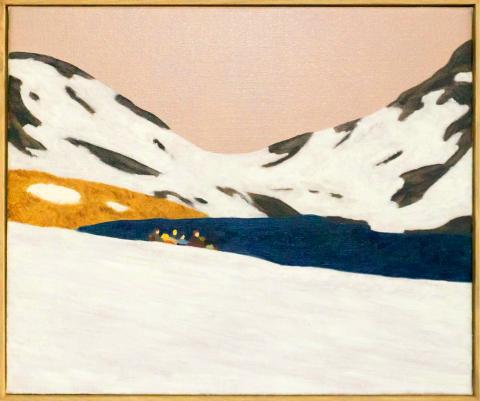
Kaohsiung’s Yiri Arts Pier-2 is presently hosting a solo exhibition by Spanish artist Guim Tio Zarraluki. Playing with Fire features new paintings that explore the relationship between humans, nature and society. This appears to be a new direction for the artist, whose earlier works focus on portraiture that examines the human condition. Zarraluki’s figurative work involves manipulation of fashion magazine images with chemicals and oil pastels to create stylized figures with ironic and exaggerated features. By contrast, Zarraluki’s new series of paintings depict small representations of humans traveling amid vast landscapes. This change in perspective seems to suggest a shift in Zarraluki’s ways of seeing. “In the past, Zarraluki had asked, where do we come from? And now, He desires to know where we will we go?” writes the gallery in a press release. La Pujada is an oil painting that depicts three figures walking through a white, minimalist mountainscape. The figures leave behind a trail of footprints that trace their trajectory uphill. In Tavascan , a lone figure walks through a snowy scene intersected by patches of black terrain towards the other side of the mountain.
■ Yiri Arts Pier-2 (伊日藝術駁二空間), Pier-2 Art Center Unit C9-14, 1 Dayong Rd, Kaohsiung City (高雄市大勇路1號駁二藝術特區大義倉群C9-14倉庫), tel: (07) 521-5783. Open Tuesdays to Sundays from 1pm to 7pm
■ Until Jan. 13
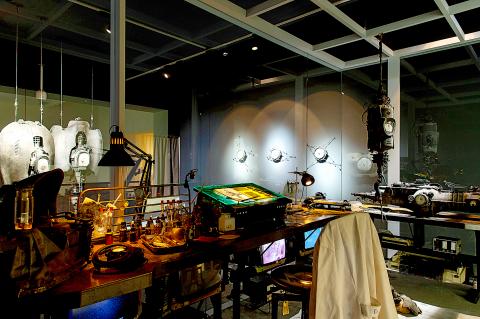
Photo Courtesy of Taipei Fine Art Museum
A video art program, Who’s Singin’ (是誰在唱歌), is currently on view at the Museum of Contemporary Art Taipei’s main plaza. The program consists of four artists who explore the behavior of singing and its associated video culture. In the curatorial preface, curator Huang Hsiang-ning (黃香凝) speaks of the history of karaoke in Taiwan and its rise to popularity in the late 80s. While karaoke culture was first introduced to Taiwan from Japan, “the successful business model of Taiwanese KTV spread [back] to Japan” in the 90’s where it became a “popular leisure activity found in households, restaurants and the countryside for people to briefly escape the pressure of everyday life,” writes Huang. The artists use the karaoke format as a departure point to reflect on various historical and social issues. Yu Cheng-ta’s (余政達) A Practice of Singing: Japanese Songs is a video that addresses the cultural translations between Japan and Taiwan and the transformation of meaning during the process. Chen Han-yu’s (陳含瑜) The Sungai Duri Karaoke Project narrates family relationships between Indonesia and Taiwan through film and song.
■ Museum of Contemporary Art, Taipei (台北當代藝術館, MOCA, Taipei), 39 Changan W Rd, Taipei City (台北市長安西路39號), tel: (02) 2552-3721. Open Tuesdays to Sundays from 10am to 6pm
■ Until Jan. 27
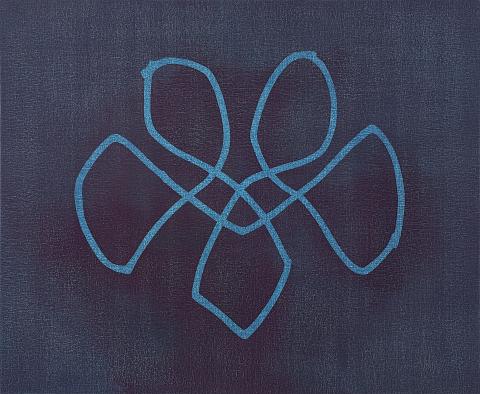
Photo Courtesy of Double Square Gallery
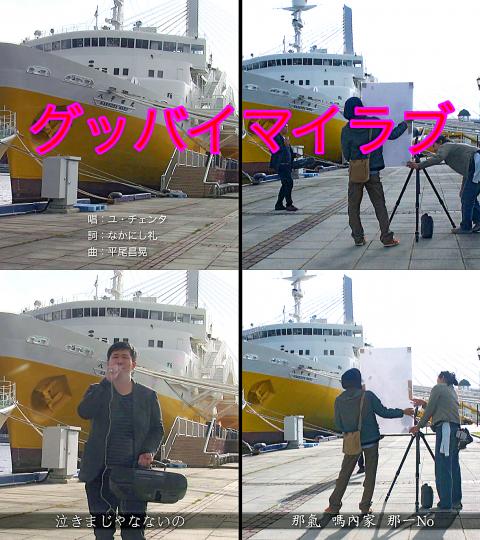
Photo Courtesy of Museum of Contemporary Art Taipei

Every now and then, it’s nice to just point somewhere on a map and head out with no plan. In Taiwan, where convenience reigns, food options are plentiful and people are generally friendly and helpful, this type of trip is that much easier to pull off. One day last November, a spur-of-the-moment day hike in the hills of Chiayi County turned into a surprisingly memorable experience that impressed on me once again how fortunate we all are to call this island home. The scenery I walked through that day — a mix of forest and farms reaching up into the clouds

With one week left until election day, the drama is high in the race for the Chinese Nationalist Party (KMT) chair. The race is still potentially wide open between the three frontrunners. The most accurate poll is done by Apollo Survey & Research Co (艾普羅民調公司), which was conducted a week and a half ago with two-thirds of the respondents party members, who are the only ones eligible to vote. For details on the candidates, check the Oct. 4 edition of this column, “A look at the KMT chair candidates” on page 12. The popular frontrunner was 56-year-old Cheng Li-wun (鄭麗文)

“How China Threatens to Force Taiwan Into a Total Blackout” screamed a Wall Street Journal (WSJ) headline last week, yet another of the endless clickbait examples of the energy threat via blockade that doesn’t exist. Since the headline is recycled, I will recycle the rebuttal: once industrial power demand collapses (there’s a blockade so trade is gone, remember?) “a handful of shops and factories could run for months on coal and renewables, as Ko Yun-ling (柯昀伶) and Chao Chia-wei (趙家緯) pointed out in a piece at Taiwan Insight earlier this year.” Sadly, the existence of these facts will not stop the

Oct. 13 to Oct. 19 When ordered to resign from her teaching position in June 1928 due to her husband’s anti-colonial activities, Lin Shih-hao (林氏好) refused to back down. The next day, she still showed up at Tainan Second Preschool, where she was warned that she would be fired if she didn’t comply. Lin continued to ignore the orders and was eventually let go without severance — even losing her pay for that month. Rather than despairing, she found a non-government job and even joined her husband Lu Ping-ting’s (盧丙丁) non-violent resistance and labor rights movements. When the government’s 1931 crackdown